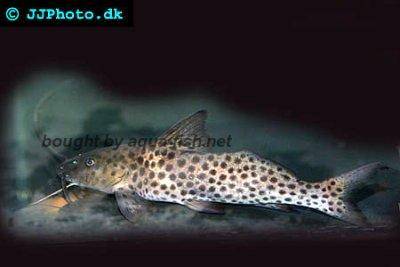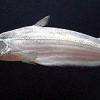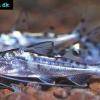Jello band catfish - Aguarunichthys torosus
Scientific name: Aguarunichthys torosus
Common name: Jello band catfish
Family: Pimelodidae
Usual size in fish tanks: 33 - 36 cm (12.99 - 14.17 inch)
014
Recommended pH range: 6 - 7
Recommended water hardness: 4 - 16°N (71.43 - 285.71ppm)
0°C 32°F30°C 86°F
Recommended temperature range: 22 - 28 °C (71.6 - 82.4°F)
The way how these fish reproduce: Spawning
Where the species comes from: South America
Temperament to its own species: peaceful
Temperament toward other fish species: peaceful
Usual place in the tank: Bottom levels
Food and Feeding
Feed the Jello Band Catfish high-quality flake food or specially formulated catfish pellets. They also enjoy occasional treats such as bloodworms and brine shrimp, which can enhance their diet and provide additional nutrients.
Origin
This species is native to South America, specifically inhabiting the Amazon River basin in Peru. They are well-adapted to the warm, nutrient-rich waters of this region.
Sexing
There are no discernible physical differences between male and female Jello Band Catfish. Identifying their sex requires more advanced techniques that are typically not necessary for aquarium hobbyists.
Breeding
Currently, there are no documented instances of Jello Band Catfish breeding successfully in home aquariums. Breeding this species remains a challenge and has not yet been achieved in captivity.
Lifespan
The Jello Band Catfish typically lives between 5 and 8 years when provided with proper care and a suitable environment. With attentive maintenance and a well-balanced diet, they may reach the upper end of this lifespan range.
Short Description
The Jello Band Catfish thrives in a well-planted aquarium that offers ample hiding spots. Ensure a moderate water current and incorporate rocks or bog wood to mimic their natural habitat. Gentle, subdued lighting helps reduce stress and makes the fish feel more comfortable.
Pictures
Images provided by aqua-fish.net, courtesy of jjphoto.dk.



 Highwaterman
Highwaterman  Spotted
Spotted  Ornate
Ornate  Pictus
Pictus  Tiger
Tiger